Mass march marks 100 years of women's vote
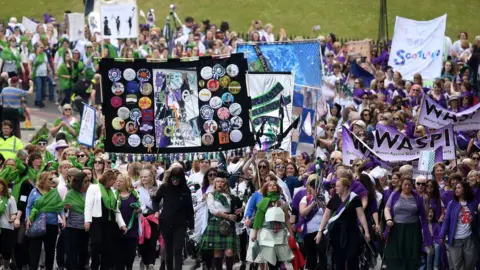 Getty Images
Getty ImagesWomen across the UK have marched together to create a living artwork, to mark 100 years since the first British women won the vote.
Women in Belfast, Cardiff, Edinburgh and London donned the colours of the suffragette movement - green, white and violet - as part of a mass procession.
One hundred female artists worked with local communities to create banners for the marches in the four cities.
The protest banners bear messages about equality.
The mass participation artwork is being hailed as a "once-in-a-lifetime opportunity" celebrating a centenary of the women's vote.
The event was co-ordinated by 14-18 Now - an art programme connecting people with the First World War - and Artichoke - a charity which creates public art in the UK.
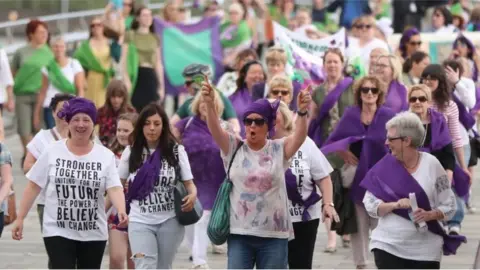 PA
PA PA
PAThe 1918 Representation of the People Act gave women the vote - but only for those who were over 30 years old and who also owned property.
Those marching had been given a green, white or violet scarf to wear to create the coloured stripes in the procession. Processions began at 14:00 BST.

On the London march
By BBC correspondent Chi Chi Izundu
They are all here paying homage to the women of suffrage, but many of the thousands taking part want to make their voices heard now.
"Equal seats, equal voices" was being chanted by one group of women demanding a 50/50 representation in parliament. Another group called out for equal rights for women in prisons.
Women had travelled from as far as New Zealand to take part in the march, remembering how 100 years ago, their ancestors had travelled half-way across the world just to support the British fight for the right to vote.
Men joined in too, reminding us that some did play a supportive role in the fight.
Fathers accompanied their daughters, brothers walked alongside mums and sisters.
And women from ethnic minorities wanted to highlight the plight that some had gone through supporting women 100 years ago.
Girls as young as 12 marched alongside their mothers and grandmothers calling for equal pay and representation in all jobs and as a mark of respect for those who, 100 years ago, walked along parts of this very same route in the fight for women's voices to be heard.

Tens of thousands of women were expected to join the processions, with women gathering from all over the world, and the events were broadcast on BBC One.
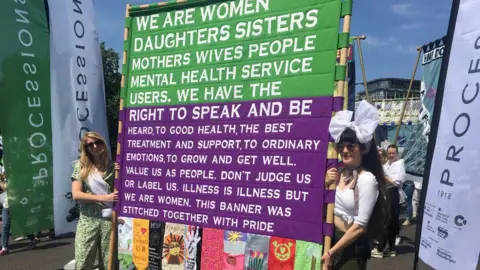
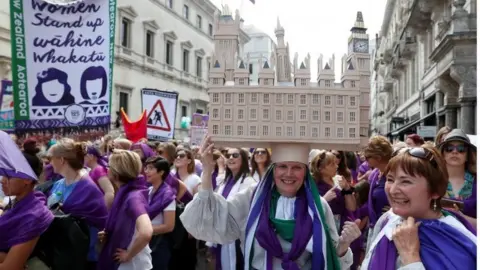 Reuters
Reuters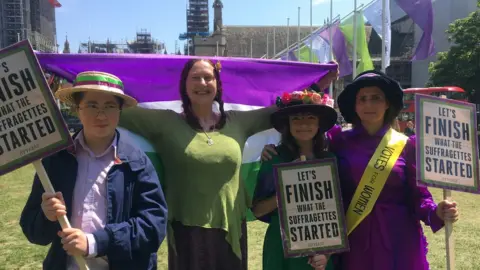
Joanne Johnson said she was attending the march to "honour the women that fought for our right to vote".
However she also said the fight for equality was still going on. "The suffragettes started this but we still don't get equal pay, even in 2018," she added.
Her daughter Rosie said she was there to "say thank you to the suffragettes for what they did for us".
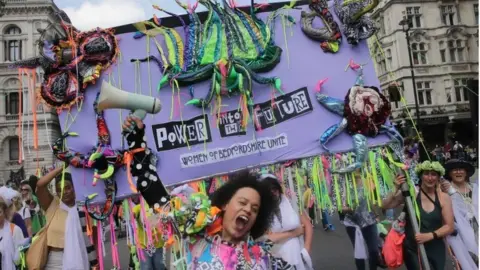 AFP/ Getty Images
AFP/ Getty Images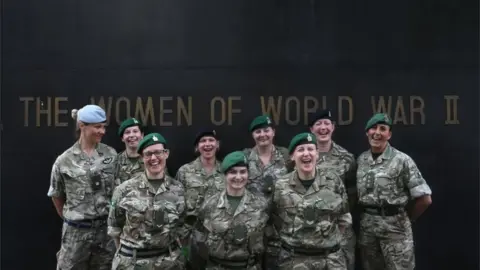 AFP/ Getty Images
AFP/ Getty ImagesAllow X content?
Allow X content?
This year has seen a number of events celebrating the centenary of women winning the right to vote, and paying tribute to the suffragette movement.
In February, on the date the parliamentary act was passed, members of the House of Lords held a debate. Several speakers shared memories of women who had fought for female suffrage, but many argued there was still a long way to go.
In April, a statue commemorating the life of the suffragist, Millicent Fawcett - by artist Gillian Wearing - was unveiled opposite Parliament.
Most recently, dozens of sites across England where suffragettes held mass meetings or protests are being officially recognised on the National Heritage List.
Allow X content?
Historic England has chosen more than 40 places which record the frontline of the movement's struggle.
Included on the list is the Prince's Stand at Epsom racecourse, the scene of the most famous protest by suffragettes, in which Emily Davison was fatally injured after she ran in front of the King's horse.
